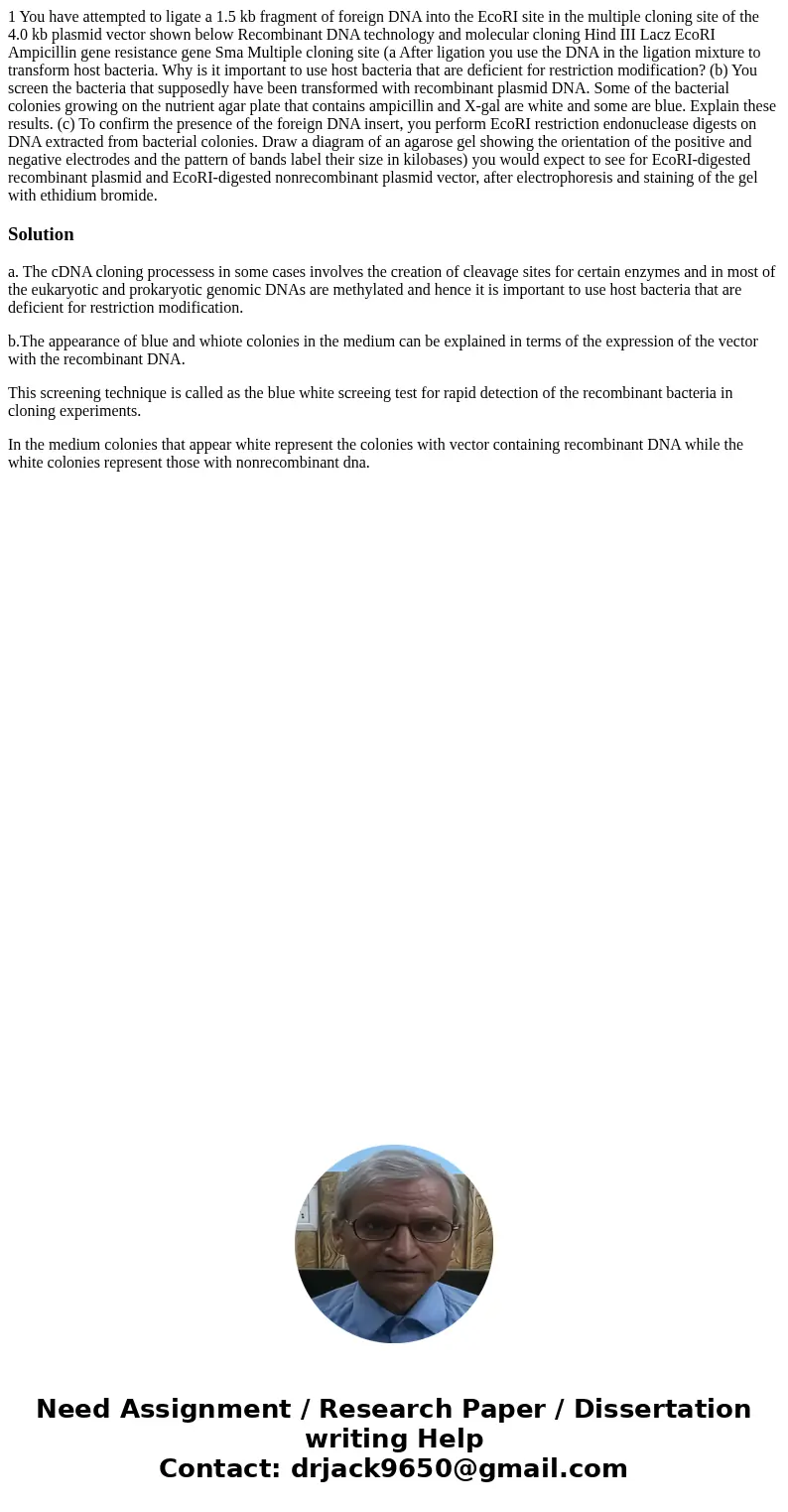1 You have attempted to ligate a 15 kb fragment of foreign D
1 You have attempted to ligate a 1.5 kb fragment of foreign DNA into the EcoRI site in the multiple cloning site of the 4.0 kb plasmid vector shown below Recombinant DNA technology and molecular cloning Hind III Lacz EcoRI Ampicillin gene resistance gene Sma Multiple cloning site (a After ligation you use the DNA in the ligation mixture to transform host bacteria. Why is it important to use host bacteria that are deficient for restriction modification? (b) You screen the bacteria that supposedly have been transformed with recombinant plasmid DNA. Some of the bacterial colonies growing on the nutrient agar plate that contains ampicillin and X-gal are white and some are blue. Explain these results. (c) To confirm the presence of the foreign DNA insert, you perform EcoRI restriction endonuclease digests on DNA extracted from bacterial colonies. Draw a diagram of an agarose gel showing the orientation of the positive and negative electrodes and the pattern of bands label their size in kilobases) you would expect to see for EcoRI-digested recombinant plasmid and EcoRI-digested nonrecombinant plasmid vector, after electrophoresis and staining of the gel with ethidium bromide. 
Solution
a. The cDNA cloning processess in some cases involves the creation of cleavage sites for certain enzymes and in most of the eukaryotic and prokaryotic genomic DNAs are methylated and hence it is important to use host bacteria that are deficient for restriction modification.
b.The appearance of blue and whiote colonies in the medium can be explained in terms of the expression of the vector with the recombinant DNA.
This screening technique is called as the blue white screeing test for rapid detection of the recombinant bacteria in cloning experiments.
In the medium colonies that appear white represent the colonies with vector containing recombinant DNA while the white colonies represent those with nonrecombinant dna.

 Homework Sourse
Homework Sourse